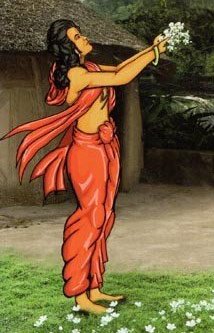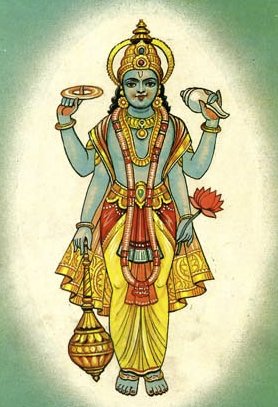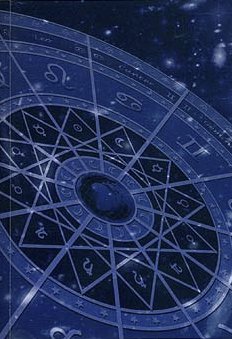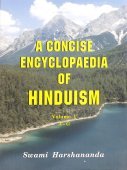Baladeva, Bala-deva: 26 definitions
Introduction:
Baladeva means something in Buddhism, Pali, Hinduism, Sanskrit, Jainism, Prakrit. If you want to know the exact meaning, history, etymology or English translation of this term then check out the descriptions on this page. Add your comment or reference to a book if you want to contribute to this summary article.
In Hinduism
Purana and Itihasa (epic history)
Source: archive.org: Nilamata Purana: a cultural and literary studyBaladeva (बलदेव) refers to a deity that was once worshipped in ancient Kashmir (Kaśmīra) according to the Nīlamatapurāṇa.—As is clear from his plough and his worship at Kṛṣyārambha, Baladeva is a deity of agriculture. He is stated to have been a devotee of Vāsudeva and is identified with Ananta.
Source: Cologne Digital Sanskrit Dictionaries: The Purana IndexBaladeva (बलदेव).—See Balarāma (also Balabhadra) married Suvratā, daughter of Kakudmi.*
- * Bhāgavata-purāṇa IX. 3. 33-6; Vāyu-purāṇa 86. 29.
Baladeva (बलदेव) is a name mentioned in the Mahābhārata (cf. I.61.91) and represents one of the many proper names used for people and places. Note: The Mahābhārata (mentioning Baladeva) is a Sanskrit epic poem consisting of 100,000 ślokas (metrical verses) and is over 2000 years old.

The Purana (पुराण, purāṇas) refers to Sanskrit literature preserving ancient India’s vast cultural history, including historical legends, religious ceremonies, various arts and sciences. The eighteen mahapuranas total over 400,000 shlokas (metrical couplets) and date to at least several centuries BCE.
Kavya (poetry)
Source: Wisdom Library: Kathāsaritsāgara1) Baladeva (बलदेव) is the father of Śaktideva: a Brāhman living in the city Vardhamana and addicted to gambling, according to the “story of the golden city”, according to the Kathāsaritsāgara, chapter 24. Śaktideva fraudulently claimed to have seen the Golden city.
2) Baladeva (बलदेव) is the name of a warrior who fought on Śrutaśarman’s side, but was slain by Śatānīka, who fought on Sūryaprabha’s side, according to the Kathāsaritsāgara, chapter 48. Accordingly: “... then a fight took place between those Vidyādhara princes on the one side and Prabhāsa and his comrades on the other, in which there was a great slaughter of soldiers. And in the single combats between the two hosts many warriors were slain on both sides, men, Asuras and Vidyādharas... and Baladeva, [and nine others]—these ten were slain by the Prince Śatānīka”.
The story of Baladeva was narrated by the Vidyādhara king Vajraprabha to prince Naravāhanadatta in order to relate how “Sūryaprabha, being a man, obtain of old time the sovereignty over the Vidyādharas”.
The Kathāsaritsāgara (‘ocean of streams of story’), mentioning Baladeva, is a famous Sanskrit epic story revolving around prince Naravāhanadatta and his quest to become the emperor of the vidyādharas (celestial beings). The work is said to have been an adaptation of Guṇāḍhya’s Bṛhatkathā consisting of 100,000 verses, which in turn is part of a larger work containing 700,000 verses.

Kavya (काव्य, kavya) refers to Sanskrit poetry, a popular ancient Indian tradition of literature. There have been many Sanskrit poets over the ages, hailing from ancient India and beyond. This topic includes mahakavya, or ‘epic poetry’ and natya, or ‘dramatic poetry’.
Vaishnavism (Vaishava dharma)
Source: archive.org: A History of Indian Philosophy (vaishnavism)Baladeva (बलदेव) or “Baladeva Vidyābhūṣaṇa” was Vaiśya by caste and born in a village near Remuna in the Balesvar subdivision of Orissa; he was a pupil of vairāgī Pītāmvara Dāsa, and was generally known as Govinda Dāga. He was the disciple of a Kanouj Brahmin, Rādhā Dāmodara Dāsa, the author of Vedānta-Syamantaka. [...] Baladeva himself had two well known disciples, Nanda Miśra and Uddhava Dāsa; he wrote his commentary on Rūpa Gosvāmī’ś Stava-mālā in the Śaka era 1686 (or A.D. 1764).
Baladeva Vidyābhūṣaṇa is known to have written at least the following fourteen works:
- Sāhityakaumudī and its commentary, Kṛṣṇānandī;
- Govindabhāṣya;
- Siddhāntaratna ;
- Kāvyakaustubha ;
- Gītābhūṣaṇa, a commentary on the Gītā ;
- a commentary on Rādhā Dāmodara’s Chandaḥ-Kaustubha ;
- Prameyaratnāvalī and its commentary, Kāntimālā ;
- a commentary on Rūpa’s Stava-mālā ;
- a commentary on Rūpa’s Laghubhāgavatāmṛta;
- Nāmārtha-śuddhikā, a commentary on Sahasranāma;
- a commentary on Jaya Deva’s Candrāloka ;
- Siddhāntadarpaṇa ;
- a commentary on Tattvasandarbha ;
- a commentary on Rūpa’s Nāṭakacandrikā.
Baladeva (बलदेव) refers to:—The first plenary expansion of the Supreme lord, Śrī kṛṣṇa;kṛṣṇa’s elder brother. (cf. Glossary page from Arcana-dīpikā).

Vaishnava (वैष्णव, vaiṣṇava) or vaishnavism (vaiṣṇavism) represents a tradition of Hinduism worshipping Vishnu as the supreme Lord. Similar to the Shaktism and Shaivism traditions, Vaishnavism also developed as an individual movement, famous for its exposition of the dashavatara (‘ten avatars of Vishnu’).
Jyotisha (astronomy and astrology)
Source: Wisdom Library: Brihat Samhita by VarahamihiraBaladeva (बलदेव) or Baladevapaṭṭana refers to a country belonging to “Dakṣiṇa or Dakṣiṇadeśa (southern division)” classified under the constellations of Uttaraphālguni, Hasta and Citrā, according to the system of Kūrmavibhāga, according to the Bṛhatsaṃhitā (chapter 14), an encyclopedic Sanskrit work written by Varāhamihira mainly focusing on the science of ancient Indian astronomy astronomy (Jyotiṣa).—Accordingly, “The countries of the Earth beginning from the centre of Bhāratavarṣa and going round the east, south-east, south, etc., are divided into 9 divisions corresponding to the 27 lunar asterisms at the rate of 3 for each division and beginning from Kṛttikā. The constellations of Uttaraphālguni, Hasta and Citrā represent the southern division consisting of [i.e., Baladeva] [...]”.

Jyotisha (ज्योतिष, jyotiṣa or jyotish) refers to ‘astronomy’ or “Vedic astrology” and represents the fifth of the six Vedangas (additional sciences to be studied along with the Vedas). Jyotisha concerns itself with the study and prediction of the movements of celestial bodies, in order to calculate the auspicious time for rituals and ceremonies.
Yoga (school of philosophy)
Source: Brill: Śaivism and the Tantric Traditions (yoga)Baladeva (बलदेव) or Baladevamiśra was the elder brother of Bhavadevamiśra, the author of the Yuktabhavadeva, a 17th-century text dealing with Yoga.—Apart from the fact that Bhavadeva cited a wide range of Sanskrit works, the breadth of his learning is attested by the commentaries attributed to him on various śāstras. Manuscript colophons state that he was a Brahmin from Mithila and that his father was Kṛṣṇadevamiśra, his elder brother Baladevamiśra and his teacher Bhavadeva Ṭhakkura.

Yoga is originally considered a branch of Hindu philosophy (astika), but both ancient and modern Yoga combine the physical, mental and spiritual. Yoga teaches various physical techniques also known as āsanas (postures), used for various purposes (eg., meditation, contemplation, relaxation).
General definition (in Hinduism)
Source: WikiPedia: HinduismBaladeva (बलदेव): Balarama, elder brother of Sri Krishna.
Source: Gaudiya History: Baladeva VidyabhusanaSri Baladeva Vidyabhusana was a niskincana-parama bhagavata, fully-renounced topmost Devotee of Lord Krishna. Sri Baladeva Vidyabhusana (Sri Govinda Dasa) appeared in the 1600's near Remuna, Orissa. In his youth, he mastered Sanskrit grammar, poetry, and logic. After carefully studying the commentries of Sankara and Madhva he took initiation in the Tattva-vadi disciplic succession of Sripad Madhvacarya. Baladeva Vidyabhusana became a dig vijaya pandit (conqueror of all opponents) and began visiting the holy places. Wherever he went he defeated the local sages, scholars, and sannyasis.
In Buddhism
Theravada (major branch of Buddhism)
Source: Pali Kanon: Pali Proper NamesThe second of the sons of Devagabbha, the brothers known as the Andhakavenhuputta.
Baladeva killed Canura and Mutthika. The latter, when dying, vowed vengeance and, having been born as a goblin in the Kalamattika forest, assumed the form of a wrestler when Baladeva passed that way and killed and ate him. J.iv.81, 82, 88; PvA.11, 93.
Theravāda is a major branch of Buddhism having the the Pali canon (tipitaka) as their canonical literature, which includes the vinaya-pitaka (monastic rules), the sutta-pitaka (Buddhist sermons) and the abhidhamma-pitaka (philosophy and psychology).
Mahayana (major branch of Buddhism)
Source: archive.org: Bulletin of the French School of the Far East (volume 5)Baladeva (बलदेव) is the name of a Nāgarāja appointed as one of the Divine protector deities of Kesarī, according to chapter 17 of the Candragarbha: the 55th section of the Mahāsaṃnipāta-sūtra, a large compilation of Sūtras (texts) in Mahāyāna Buddhism partly available in Sanskrit, Tibetan and Chinese.—In the Candragarbhasūtra, the Bhagavat invites all classes of Gods and Deities to protect the Law [dharma?] and the faithful in their respective kingdoms of Jambudvīpa [e.g., the Nāgarāja Baladeva in Kesarī], resembling the time of the past Buddhas.

Mahayana (महायान, mahāyāna) is a major branch of Buddhism focusing on the path of a Bodhisattva (spiritual aspirants/ enlightened beings). Extant literature is vast and primarely composed in the Sanskrit language. There are many sūtras of which some of the earliest are the various Prajñāpāramitā sūtras.
In Jainism
General definition (in Jainism)
Source: Google Books: Jainism: An Indian Religion of SalvationBaladeva (बलदेव).— Baladevas, Vāsudevas and the Prativāsudevas are three heroes who appear always simultaneously, and that too on the whole nine times in a world-period. Baladeva and Vāsudeva are half-brothers, sons of a king from different wives; the Prativāsudeva is their antagonist.
Baladeva (also called Balabhadra) has a bright, white body-colour, always wears a blue-black robe and toddy palm in his banner. His four insignias are: bow, two different clubs (gadā and musala) and ploughshare; according to Digambaras: chain of precious stones, two clubs and ploughshare. His appearance in the world is announced by this mother by telling that she has seen four of the famous dreams.
Source: Google Books: Jaina IconographyBaladeva (बलदेव).—According to both Śvetāmbara and Digambara, each Vāsudeva has a step-brother, white in complexion and known as Baladeva. Nine in number, they are intimately associated with the exploits of Vāsudevas, and are depicted as superior to them in as much as the first eight Baladevas obtrain emancipation and the last of the list is said to have obtained one of the heavens. The Vāsudevas, as already shown, go to one of the different hells after death.
The Samavāyāṅga-sūtra (a Śvetāmbara text) gives the following list of the Baladecas and their mothers, who lived in the present Avasarpiṇī age:
- Acala (mother Bhadrā),
- Vijaya (mother Subhadrā),
- Bhadra (mother Suprabhā),
- Suprabha (mother Sudarśanā),
- Sudarśana (mother Vijayā),
- Ānanda (mother Vaijayantī),
- Maṇḍana (mother Jayantī),
- Padma (mother Aparājitā),
- Rāma (mother Rohiṇī).
The Digambara texts give the following list:
- Vijaya,
- Acala,
- Sudharma,
- Suprabha,
- Sudarśana,
- Nandī,
- Nandīmitra,
- Rāma,
- Padma.
According to both Śvetāmbara and Digambara, they wear garments of dark-blue colour. On their banners is seen the mark of the palm-tree (tāla). They carry the bow, the plough, the pestle and the arrow according to the Śvetāmbara tradition while the Digambaras describe the following symbols: the club, the garland of jewels, the plough, and the pestle. the Tiloyapaṇṇatti however notes the following iconographic marks of a Baladeva: the plough, the pestle, a chariot and a garland ogf jewels (ratnāvali).
Source: WikiPedia: JainismBaladeva (बलदेव) (or Balabhadra, Balarāma, Rāma, Bala) refers to a set of nine “gentle heroes” and half-brothers of Vasudevas (or Viṣṇus, Nārāyaṇas), mentioned in both Śvetāmbara and Digambara literature.—In every half time cycle, there are 9 sets of Balabhadras (gentle heroes), Vasudevas (violent heroes) and Prativāsudevas (anti-heroes). Baladevas, half-brothers of Vasudevas, are described as fair in complexion and wear garments of dark blue and have a banner of palm tree. Their symbols or weapons are: bow, plough, pestle and arrow. The two brothers are inseparable and they jointly rule three continents as half-Chakravarti. Although Narayana is the mightier of the two, Balabhadra is depicted as superior for his non-violent ways and he achieves liberation. According to the Jain puranas, the Balabhadras lead an ideal Jain life.
Source: academia.edu: Tessitori Collection IBaladeva (बलदेव) or Baladevakathā refers to one of the 157 stories embedded in the Kathāmahodadhi by Somacandra (narrating stories from Jain literature, based on the Karpūraprakara), which is included in the collection of manuscripts at the ‘Vincenzo Joppi’ library, collected by Luigi Pio Tessitori during his visit to Rajasthan between 1914 and 1919.—The Kathāmahodadhi represents a repository of 157 stories [e.g., Baladeva-kathā] written in prose Sanskrit, although each of them is preceded by a verse. Together, they stage a large number of Jain characters (including early teachers). [...]

Jainism is an Indian religion of Dharma whose doctrine revolves around harmlessness (ahimsa) towards every living being. The two major branches (Digambara and Svetambara) of Jainism stimulate self-control (or, shramana, ‘self-reliance’) and spiritual development through a path of peace for the soul to progess to the ultimate goal.
Languages of India and abroad
Sanskrit dictionary
Source: DDSA: The practical Sanskrit-English dictionaryBaladeva (बलदेव).—
1) air, wind.
2) Name of the elder brother of Kṛṣṇa; see बलराम (balarāma) below.
Derivable forms: baladevaḥ (बलदेवः).
Baladeva is a Sanskrit compound consisting of the terms bala and deva (देव).
Source: Cologne Digital Sanskrit Dictionaries: Edgerton Buddhist Hybrid Sanskrit DictionaryBaladeva (बलदेव).—name of a nāga king: Mahāvyutpatti 3300; Mahā-Māyūrī 247.4.
Source: Cologne Digital Sanskrit Dictionaries: Shabda-Sagara Sanskrit-English DictionaryBaladeva (बलदेव).—m.
(-vaḥ) Baladeva, the elder brother of Krishna. 2. Air, wind. f.
(-vā) A medicinal plant, commonly Trayamana. E. bala the same and deva divine, or bala strength, and deva who sports.
Source: Cologne Digital Sanskrit Dictionaries: Benfey Sanskrit-English DictionaryBaladeva (बलदेव).—m. 1. Air, wind. 2. The elder brother of Kṛṣṇa.
--- OR ---
Baladeva (बलदेव).—see s. v.
Baladeva is a Sanskrit compound consisting of the terms bala and deva (देव).
Source: Cologne Digital Sanskrit Dictionaries: Cappeller Sanskrit-English DictionaryBaladeva (बलदेव).—[masculine] [Name] of the elder brother of Kṛṣṇa.
--- OR ---
Bāladeva (बालदेव).—[masculine] [Name] of a man.
Source: Cologne Digital Sanskrit Dictionaries: Aufrecht Catalogus Catalogorum1) Baladeva (बलदेव) as mentioned in Aufrecht’s Catalogus Catalogorum:—father of Śrīdhara Bhaṭṭa (Nyāyakandali). Report. Cxliv.
2) Baladeva (बलदेव):—poet. [Sūktikarṇāmṛta by Śrīdharadāsa]
3) Baladeva (बलदेव):—son of Keśava: Śṛṅgārahāra alaṃk.
4) Bāladeva (बालदेव):—father of Bāvādeva (Arpaṇamīmāṃsā). Hall. p. 191.
5) Baladeva (बलदेव):—called Vidyābhūṣaṇa: Prameyaratnāvalī and—[commentary] Kāntimālā. Brahmasūtrabhāṣya Govindabhāṣya and—[commentary] Siddhāntaratna.
6) Bāladeva (बालदेव):—C. on Hāla’s Gāthāsaptaśatī.
Source: Cologne Digital Sanskrit Dictionaries: Monier-Williams Sanskrit-English Dictionary1) Baladeva (बलदेव):—[=bala-deva] [from bala > bal] m. wind, [cf. Lexicographers, esp. such as amarasiṃha, halāyudha, hemacandra, etc.]
2) [v.s. ...] Name of the elder brother of Kṛṣṇa (said to have been produced from a white hair of Viṣṇu, and regarded as a Nāga), [Mahābhārata; Kāvya literature] etc.
3) [v.s. ...] of a Nāga-rāja, [cf. Lexicographers, esp. such as amarasiṃha, halāyudha, hemacandra, etc.]
4) [v.s. ...] of a Brāhman, [Kathāsaritsāgara]
5) [v.s. ...] of sub voce authors (also with vidyābhūṣaṇa), [Catalogue(s)]
6) Bāladeva (बालदेव):—[=bāla-deva] [from bāla] m. Name of a man, [Catalogue(s)]
7) [v.s. ...] [patronymic] [from] bala-d, [Patañjali]
Source: Cologne Digital Sanskrit Dictionaries: Yates Sanskrit-English DictionaryBaladeva (बलदेव):—[bala-deva] (vaḥ) 1. m. Baladeva; air, wind. f. (bā) Medicinal plant.
[Sanskrit to German]
Sanskrit, also spelled संस्कृतम् (saṃskṛtam), is an ancient language of India commonly seen as the grandmother of the Indo-European language family (even English!). Closely allied with Prakrit and Pali, Sanskrit is more exhaustive in both grammar and terms and has the most extensive collection of literature in the world, greatly surpassing its sister-languages Greek and Latin.
See also (Relevant definitions)
Partial matches: Bala, Deva, Teva.
Starts with: Baladeva vidyabhushana, Baladevahnika, Baladevakatha, Baladevamishra, Baladevapattana, Baladevasvasar, Baladevasvasri, Baladevavattika, Baladevavidyabhushana.
Ends with: Kulabaladeva.
Full-text (+203): Yamunabhid, Pancamara, Mushtikantaka, Balaprasu, Musalin, Balabhadra, Balarama, Musalayudha, Sitasita, Samkarshana, Kamapala, Rukmibhid, Rukmidarpa, Ahinamabhrit, Shitivasas, Sirapani, Baladevapattana, Samvartakin, Samvartaka, Pralambabhid.
Relevant text
Search found 68 books and stories containing Baladeva, Bala-deva, Bāladeva, Bāla-deva; (plurals include: Baladevas, devas, Bāladevas). You can also click to the full overview containing English textual excerpts. Below are direct links for the most relevant articles:
Garga Samhita (English) (by Danavir Goswami)
Verses 5.19.2-3 < [Chapter 19 - The Festival on Śrī Kṛṣṇa Return]
Verse 6.6.38 < [Chapter 6 - The Yādavas’ Victory When Śrī Rukmiṇī is Kidnapped]
Verse 3.6.24 < [Chapter 6 - The Test of Śrī Kṛṣṇa]
Brihad Bhagavatamrita (commentary) (by Śrī Śrīmad Bhaktivedānta Nārāyana Gosvāmī Mahārāja)
Verse 1.7.121 < [Chapter 7 - Pūrṇa (pinnacle of excellent devotees)]
Verse 1.7.37-38 < [Chapter 7 - Pūrṇa (pinnacle of excellent devotees)]
Verse 1.7.56-57 < [Chapter 7 - Pūrṇa (pinnacle of excellent devotees)]
Trishashti Shalaka Purusha Caritra (by Helen M. Johnson)
Part 10: The future Baladevas < [Chapter VI]
Introduction to volume 3 < [Introductions]
Part 9: The future Vāsudevas < [Chapter VI]
Parama Samhita (English translation) (by Krishnaswami Aiyangar)
The Bhāgavata cult prevalant all over India at the beginning of the Christian era < [Introduction]
The Bhāgavata religion coeval with Jainism and Buddhism < [Introduction]
Poems included the collection Paripāḍal expound the Pāñcarātra < [Introduction]
Bhagavati-sutra (Viyaha-pannatti) (by K. C. Lalwani)
Chapter 9: Sphere of time < [Book 2]
Part 3 - Salt Sea < [Chapter 2]
Part 3 - On patriarchs < [Chapter 5]
Related products
